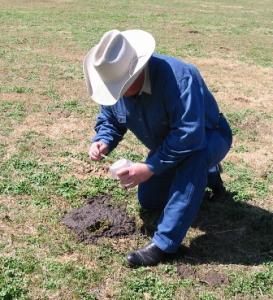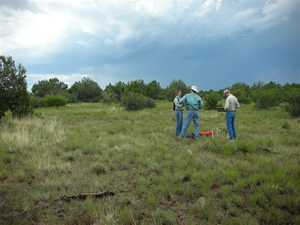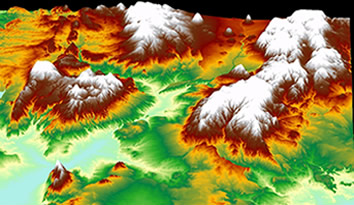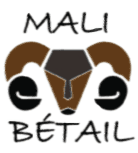
NIRS: Near-infrared reflectance spectroscopy
Technology for rapidly assessing diet nutritional value of free-ranging livestock.
What is NIRS?
Near-infrared reflectance spectroscopy (NIRS) is the technology that the GAN Lab uses to analyze animal fecal samples.
The NIRS process involves exposing a dried, ground fecal sample to light energy. The intensity of reflectance is measured across several hundred wavelengths in the near-infrared band. Reflectance is influenced by the number and type of chemical bonds in the feces. Primary wavelengths in prediction equations appear to be associated with the fiber, alkane, and microbial fractions of the feces.
Adviancing research with NIRS
A team of scientists with Texas A&M AgriLife began researching NIRS technology in the early 1990s. They succeeded at predicting dietary crude protein (CP) and digestible organic matter (DOM), of cattle (Lyons and Stuth 1992) and later with Spanish goats (Leite and Stuth 1995) via fecal profiling. This research was conducted in collaboration with experiment stations at various sites in mid-South Texas, Central Texas, Central Oklahoma, and Central Missouri. Laboratory values were regressed against matched fecal spectra using a Perstorp Scientific 6500 machine equipped with ISI software. Known diet samples from esophageal fistulate were matched with feces of intact cows grazing a wide variety of forages. These diet – fecal pairs were used to develop a reference data set to build prediction or calibration equations. Fecal equation diet quality predictions were then validated against herds with known diet qualities. Equations developed to date have been evaluated in a wide variety of forage types. Currently, the lab can predict dietary CP (%) and DOM (%) as well as fecal nitrogen (FN%) and fecal phosphorus (FP%).
Expanding NIRS
Since the initial NIRS studies concluded, over 30 research projects have been conducted using NIRS technology to analyze the diet quality of cattle, deer, elk, bison, and giant pandas among others. In 1995, the original nutritional balance software, or NUTBAL app, was delveloped to help create a least-cost nutritional management plan by using results from NIRS fecal profiling. NUTBAL through the years has been augmented with further research and is now an online application designed to provide site-specific nutrition recommendations.
Client decision support through the NIRS/NUTBAL system
NIRS results provide forage quality data needed by the NUTBAL decision support software. This software combines the NIRS results with information about animal descriptions (kind, class, breed), body condition, forage conditions, supplemental feed information, environmental conditions and performance targets. Scientists of the GAN Lab use this “NIRS/NUTBAL system” to produce nutritional balance reports for protein and net energy and a report for least-cost feeding solutions. If a deficiency exists, NUTBAL can determine the amount of least-cost feedstuff needed to correct the problem.
These reports can be used by producers, by GAN Lab staff, by trained consultants, and extension personnel to provide advisory reports to clients. Customers of the GAN Lab may purchase a NUTBAL Advisory in addition to the NIRS/NUTBAL System Report. This Advisory is an interpretation of the results and recommendations for nutritional management.








